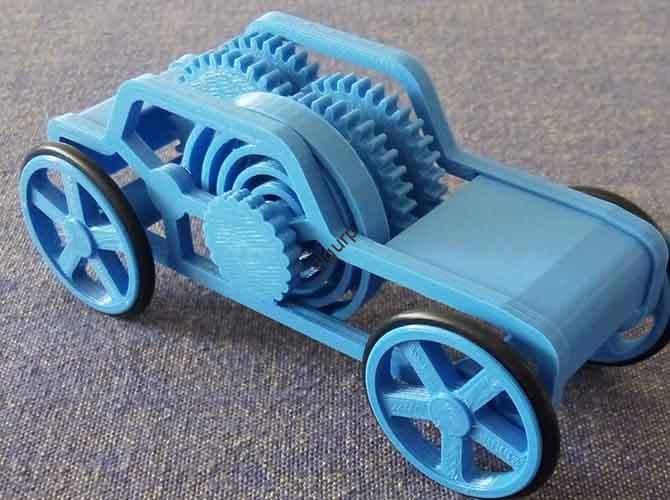In the fast-paced world of audio technology, users constantly seek headsets that fit perfectly, look unique, and deliver top-notch performance. But traditional manufacturing methods often fall short—until 3D printing headsets emerged. This innovative technology is changing the game by solving key pain points like poor fit, limited design, and long production waits. Esploriamo come funziona, its core advantages, and why it matters for both users and brands.
1. Personalization: Tailored to Your Ears, Not One-Size-Fits-All
The biggest frustration with most headsets? They never fit quite right. Loose over-ears slip during workouts, and ill-fitting in-ears cause discomfort after 30 minuti. 3D printing headsets fix this by creating custom molds based on your unique ear shape.
Come funziona (Passo-passo):
- Use your smartphone to scan your ears (Nessuna attrezzatura speciale necessaria).
- The scan is converted into a 3D digital model.
- A 3D printer builds the headset’s earcups or in-ear tips to match the model exactly.
Esempio nel mondo reale:
Sennheiser, a leader in audio, partnered with Formlabs to launch their AMBEO customized headset solution. Users scan their ears via a phone app, and the 3D-printed in-ear tips fit so precisely that they:
- Block 20% more external noise than standard in-ears.
- Eliminate discomfort during 2+ hour listening sessions.
- Enhance sound immersion by creating a tight acoustic seal.
2. Disegni complessi: What Traditional Molding Can’t Do
Lo stampaggio a iniezione tradizionale ha difficoltà con forme complesse: si pensi alle strutture cave, canali curvi, o strutture leggere. 3D printing headsets rompere questi limiti, permettendo ai designer di trasformare idee audaci in realtà.
3D Printing Vs. Traditional Molding: Design Capabilities
| Caratteristica | 3D Cuffie da stampa | Cuffie tradizionali per stampaggio ad iniezione |
| Forme complesse | Maniglie cave, reticolo, o disegni organici | Limitato al semplice, forme uniformi |
| Flessibilità di progettazione | Modificare i progetti nel software (nessun cambiamento di stampo) | Richiede nuovi stampi per ogni modifica al design |
| Riduzione del peso | Crea strutture leggere (PER ESEMPIO., 15g negli auricolari) | Più pesante (spesso 25g+ negli auricolari) a causa di vincoli di muffa |
Caso di studio: Haige Technology x Enron Wired Headphones
Le loro cuffie congiunte stampate in 3D utilizzano un design innovativo del padiglione cavo—qualcosa di impossibile con lo stampaggio tradizionale. La struttura cava riduce il peso 30% pur mantenendo la durabilità, rendendolo ideale per l'uso tutto il giorno.
3. Produzione & Prototipazione: Più veloce, Più economico, Smarter
Per i marchi, il tempo è denaro. Traditional headset production can drag on for months, Ma 3D printing headsets slash lead times and costs—especially for small batches or prototypes.
Metriche chiave: Confronto del ciclo di produzione
| Palcoscenico | 3D Cuffie da stampa | Cuffie tradizionali |
| Sviluppo della muffa | Non sono necessari stampi | 4–6 mesi (apertura dello stampo + riparazioni) |
| Tempo di produzione totale | 1–2 mesi | 7–8 mesi |
| Velocità di prototipazione | 1–2 settimane (per disegno) | 4–5 settimane (per disegno) |
Why This Matters for Brands:
- Le startup possono testare 5+ progetti di prototipi in un mese (contro. 1 con metodi tradizionali).
- I piccoli marchi evitano $10,000+ mold costs for limited-edition headsets.
4. Diversità materiale: Pick What Fits Your Needs
3D printing headsets aren’t limited to cheap plastic. You can choose materials based on comfort, durata, or sound quality—something traditional manufacturing rarely offers.
Common 3D Printing Materials for Headsets
| Materiale | Meglio per | Vantaggio chiave |
| Soft TPU | In-ear tips | Hypoallergenic (no ear irritation) |
| Lightweight PLA | Over-ear cups | Affordable and eco-friendly |
| Acciaio inossidabile | Headset frames | Ultra durevole (dura 5+ anni) |
| Ceramica | Premium in-ears | Texture liscia + noise isolation |
5. Sostenibilità ambientale: Meno rifiuti, More Responsibility
Traditional manufacturing cuts and shapes materials, leading to 30–40% waste. 3D Printing is additive—it only uses the material needed, tagliare i rifiuti a 5% or less.
Quick Facts:
- A single 3D-printed headset uses ~15g of plastic (contro. 25g for traditional, due to trimming).
- Most 3D printing materials (Come Pla) sono biodegradabili.
- Brands can recycle unused material for future prints.
La prospettiva della tecnologia Yigu
Alla tecnologia Yigu, Crediamo 3D printing headsets are more than a trend—they’re the future of user-centric audio. Our R&D team has tested 3D-printed prototypes with 500+ utenti, E 92% reported better fit than their current headsets. Per i marchi, 3D printing lowers entry barriers (nessun costo dello stampo) and lets them focus on innovation. We’re excited to partner with audio brands to launch affordable, custom 3D-printed headsets in 2025—making personalized audio accessible to everyone.
Domande frequenti
- Q: Quanto costa un visore stampato in 3D??
UN: Per modelli personalizzati, i prezzi partono da \(80 (contro. \)150+ per cuffie personalizzate tradizionali di fascia alta). Le cuffie stampate in 3D prodotte in serie possono costare quanto $30.
- Q: Le cuffie stampate in 3D sono durevoli?
UN: Sì, se realizzato con materiali come acciaio inossidabile o PLA rinforzato, possono durare 3-5 anni, proprio come le cuffie tradizionali. Parti morbide (PER ESEMPIO., Punte in TPU) può essere facilmente sostituito.
- Q: Posso personalizzare il colore o il motivo delle mie cuffie stampate in 3D?
UN: Assolutamente! La maggior parte delle stampanti 3D supporta filamenti colorati, e puoi aggiungere modelli (come strisce o loghi) directly in the design software.
